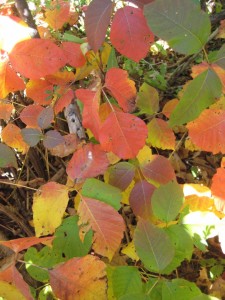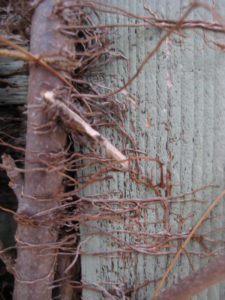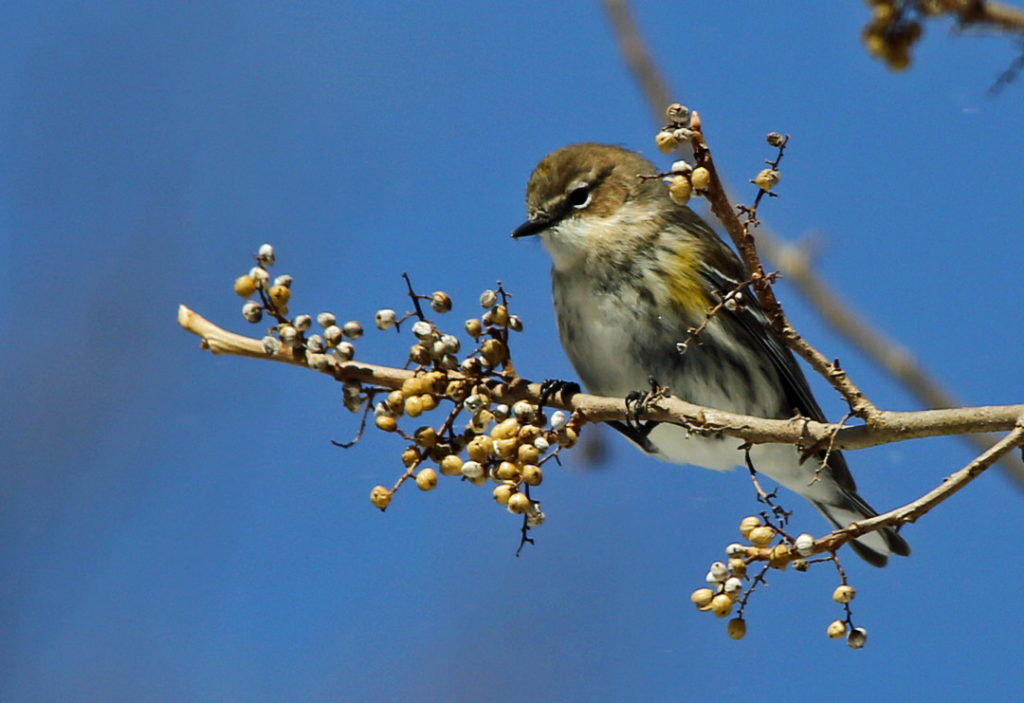Short of locking ourselves in the house all summer, what are we to do? How can we wander ankle-deep in the beauties of nature and not come home with a nasty rash?
Well, the first steps are simple, if somewhat annoying on a hot summer day–wearing shoes and long pants instead of flip-flops and shorts. If you crave bare skin, there are several excellent products on the market that act like sunblock—creams that form a physical barrier between the toxin and your skin.
But the best way to avoid poison ivy—the only sure-fire, can’t-miss, fool-proof way—is to know what it looks like. Unless you’re a firefighter or a telephone lineman on an emergency call, poison ivy is completely avoidable. It won’t sneak up behind you and bite you on the leg. It doesn’t float through the air. You have to actually touch it to get it.
You just have to keep an eye peeled for it. That’s all—nothing easier, right? Just be aware of what plants surround your every step on earth. But I sometimes think that’s the real reason poison ivy exists—to jolt me into mindfulness when I walk through the woods without awareness.
And the thing is, I have to admit it’s a really difficult plant to identify. Like snowflakes, no two poison ivy leaves are exactly alike. Sometimes the leaves are the size of a dinner plate, sometimes smaller than a dime. The plasticity that serves poison ivy so well, enabling it to adapt to an incredible range of habitats and conditions, means that a poison ivy plant in Texas may look very different from a poison ivy plant in Connecticut. A sand-dune PI plant is a different critter from a damp, shady forest PI vine.
Color varies, too: shiny maroon in early spring, pinkish-green in late spring, inconspicuous green in summer, and a rainbow of golds and purples in autumn.
But wait–poison ivy is shiny, right? Sadly, not reliably. As ever, it varies; the leaves are generally dull green, often marred with insect bumps and bites. But especially in early summer, I’ve seen poison ivy shining like silver in the sun. A waxy coating helps keep moisture in the leaves, and can reflect sunlight.
How To Identify Poison Ivy
Here are some maxims, probably centuries old, which sum up the most important identification clues:
Leaflets three, let it be!
Like clover, three leaflets make up one leaf.
Poison ivy leaves grow alternately up the stalk, unlike the leaves of many other plants which grow opposite each other.
Hairy vine, a danger sign!
Aerial rootlets along the side of the vine help poison ivy climb trees, and give the vine a furry look.  Berries white, take flight!
Berries white, take flight!
Small, waxy, fruits are often hidden under the leaves, green at first, then whitish. Not all poison ivy plants have them.
The berries, and almost all parts of the plant, can give humans an allergic reaction, but birds love them!
 (yellow-rumped warbler photo by Jim McCormac)
(yellow-rumped warbler photo by Jim McCormac)
Check out my books if you’re itching to know more:
In Praise of Poison Ivy: The Secret Virtues, Astonishing History, and Dangerous Lore of the World’s Most Hated Plant. Identification, tips for healing the itch, and why birds love PI–everything (and more) that you ever wanted to know about poison ivy.
Leaflets Three, Let It Be! A picture book for pre-K to Grade 3, to help the youngest explorers enjoy nature safely.





Good to know! I guess I need to practice more mindfulness when outside. Thanks great article
Love this article, Anita! Timely as yes, I ventured outside the house and….